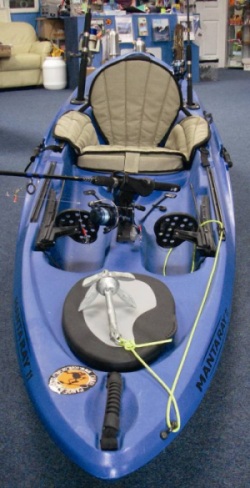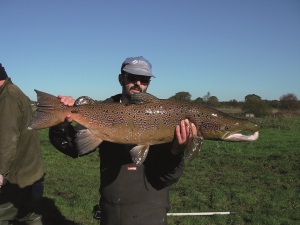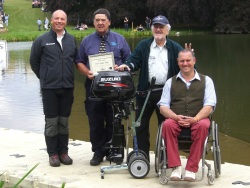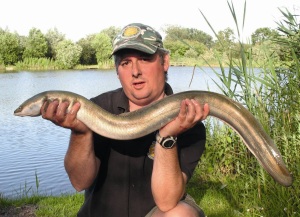Press release 19 September 2011
Gloves off: Scientists Chart Chinese Mitten Crab Invasion
Become a nature detective and record the invasion of the alien Chinese mitten crab (Eriocheir sinensis) in rivers of England and Wales. Scientists from a number of UK research institutes, including London's Natural History Museum are calling for the public to become nature detectives this autumn to better understand the full extent of the Chinese mitten crab invasion and the threat these crustaceans pose to our rivers and waterways. Anglers, waterway workers, boating enthusiasts and other nature lovers to identify and record any sightings of the alien species via an online survey. The recordings will be used by scientists to clarify the full distribution of the exotic crabs in English and Welsh rivers.
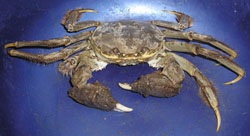
Chinese mitten crabs are now one of the most notorious aquatic invasive species featuring in the international list of the world’s 100 worst invasive species. They are regarded as a pest because they cause damage to fishing gear and unprotected river banks, block water systems as well as compete with native species for food and habitat. Current records show that mitten crabs have established populations in the Thames, Medway, Ouse Washes, Humber and the Dee Estuary. Sightings from all rivers and watersheds will be useful but researchers are particularly interested in any from:
• The Thames west of Windsor to beyond Reading
• Tyne, Tees and Wear in the North East
• Dee and Merseyside and the
• Severn Estuary to the Isle of Wight in the South West.
Nature lovers can report their finds by phone, email or online and upload their photographs by visiting www.mittencrabs.org.uk. For more information please contact the following:
London and the South East:
Claire Gilby, Natural History Museum Press Office, 0207 942 5654, [email protected] Sophia Haque, Royal Holloway University London Press Office, 01784 44 3552, [email protected]
Tyneside and the North East:
Louella Houldcroft, Newcastle University Press Office, 0191 222 5108, [email protected]
North West England and Wales:
Bran Devey, Countryside Council for Wales Press Office, 02920 77 2403, [email protected]
South West England: Guy Baker, Marine Biological Association Press Office, 01752 633 244, [email protected]
• For more information about mitten crabs and the survey visit www.nhm.ac.uk/nature-online/life/other-invertebrates/chinese-mitten-crabs/ and www.marlin.ac.uk/marine_aliens
• The consortium of UK research institutes working on the project are:
• The Natural History Museum, London • Newcastle University
• Royal Holloway University of London
• The Countryside Council for Wales
• Marine Biological Association
• All records will be archived by DASSH, the UK archive for marine biodiversity data and will be available online via the project website www.mittencrabs.org.uk and the National Biodiversity Network (www.searchnbn.net ).
• Nature detectives can report their records by telephone or email in the following way:
• Sightings from the Isle of Wight to the Humber estuary can be logged with the Natural History Museum, 0207 942 6170, [email protected]
• Sightings from the Humber estuary to the Scottish border on the east coast and Scottish border to Blackpool on the West coast can be logged with Newcastle University, 0191 222 5345, [email protected]
• Sightings from NW England from the Mersey to the Dee Estuary and the whole of Wales to the Severn estuary, can be logged with the Countryside Council for Wales, 0845 1306 229, [email protected]
• Sightings from the Severn Estuary, Cornwall to Isle of Wight can be logged with the Marine Biological Association, 01752 633291, [email protected]
• The Chinese mitten crab, (Eriocheir sinensis) originates from the Far East, with a native distribution from the Province of Fukien, China. It spread throughout northern Europe following its accidental introduction into Germany in 1912 from ships’ ballast water.
• Chinese mitten crabs are currently found throughout Europe from Kemi, Finland in the north, through Sweden, Russia, Poland, Germany, Czech Republic (Prague), Netherlands, Belgium and England to France and the Atlantic coast Portugal and Spain.
• Mitten crabs feature in the IUCN-ISGG database of the world’s 100 worst invasive species.
• The first record from the Thames catchment was captured on the intake screens of Lots Road Power Station at Chelsea in 1935 with a second from Southfields Reservoir, near Castleford, Yorkshire, 1948. Three male crabs were found in 1976 at the West Thurrock power station, located approximately 36 km downstream of the City of London. An ovigerous (egg carrying) crab was collected at Southend-on-Sea in 1979 and a further 20 specimens were noted again from West Thurrock in 1982.
• During the late eighties the mitten crab population increased dramatically in the Thames as demonstrated by a survey conducted by the Museum funded by the Environment Agency in 1996. The most westerly sighting being the River Colne at Staines with reports of mitten crabs from almost every Thames tributary eastwards of this point. In October 2007 a mitten crab was caught on rod and line near Boveney Loch, Windsor Racecourse which suggests mitten crab are gradually spreading westward.
• Project sponsors include the Welsh Government; Environment Agency; Countryside Council for Wales; Non-Native Species Secretariat; Fishmongers’ Hall, London Bridge; and Tyne Rivers Trust.
• Winner of Visit London’s 2010 Evening Standard’s Peoples Choice Best London for Free Experience Award and Best Family Fun Award the Natural History Museum is also a world-leading science research centre. Through its collections and scientific expertise, the Museum is helping to conserve the extraordinary richness and diversity of the natural world with groundbreaking projects in more than 70 countries.
• Royal Holloway, University of London is one of the UK’s leading teaching and research university institutions, ranked in the top 20 for research in the 2008 Research Assessment Exercise. One of the larger colleges of the University of London, Royal Holloway has a strong profile across the sciences, social sciences, arts and humanities. Its 8,000 students work with internationally-renowned scholars in 18 academic departments. Over 20% of students are postgraduates and 22% come from 130 different countries. Renowned for its iconic Founder’s Building, Royal Holloway is situated on an extensive parkland campus in Egham, Surrey, only 40 minutes from central London.
• The Marine Biological Association (MBA) is a professional body for marine scientists with some 1200 members world-wide. Since 1884 the MBA has established itself as a leading marine biological research organization contributing to the work of several Nobel Laureates and over 170 Fellows of the Royal Society. The MBA is a founder member of the Plymouth Marine Sciences Partnership.
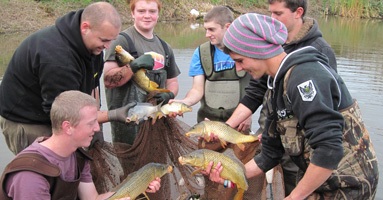

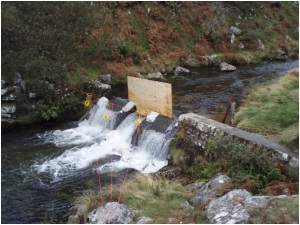
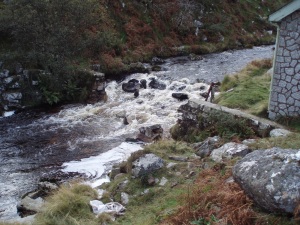
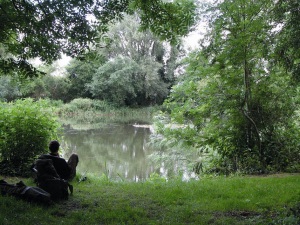
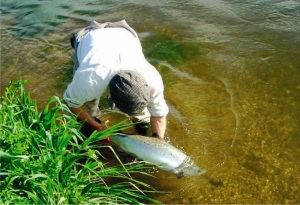 The Test is arguably the birthplace of fly fishing for trout and, to this day, is one of the most important river trout fisheries in southern England. It is also host to improving runs of North Atlantic salmon. These are much sought after by local and visiting sporting anglers happy to return their quarry after the joy of the catch. Come winter and the superb grayling fishing comes to the fore with specimen fish caught every year.
The Test is arguably the birthplace of fly fishing for trout and, to this day, is one of the most important river trout fisheries in southern England. It is also host to improving runs of North Atlantic salmon. These are much sought after by local and visiting sporting anglers happy to return their quarry after the joy of the catch. Come winter and the superb grayling fishing comes to the fore with specimen fish caught every year.